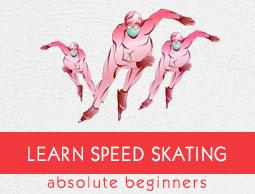Speed Skating - How to Play?
The broad objective of speed skating is to skate over the ice with a team having a strategy to win. The aim is to reach the finish line within a low time bound. It needs concentration, practice, and strength.
The three steps to begin the race are −
- Referee says, "Go to the Start".
- Referee cues to get "Ready".
- After 1 or 1.5 seconds, the starting shot is taken and the race begins.
Speed Skating − Prerequisites
Skating takes place on an oval track over a rink of 30mts by 60mts. With tight corners, it makes skaters difficult to control. So for protection, boards must be covered with mats of polyurethane foam at least 20 centimetres thick and 1-meter height. Mats should be covered with cut-resistant and water-resistant material and they should be attached to the boards. As the racing takes place at high speeds, the chances of accidents are merely at hand. So, skaters should be aware of safety precautions to keep themselves away from hurting in the sport.

The chief official of the sport nearest to the skaters is the referee. He determines when the race should begin. He checks the surface of the ice which should be resurfaced timely to maintain the surface smoothness and friction. They can disqualify skaters for committing any offense. Also, they can pass a skater to next round if he has been knocked down by another skater.
Speed Skating − While Starting
When the skaters receive a signal to start, it is the responsibility of the starter to start the race. If the skaters had committed a false start, they have one chance before they get disqualified. When the Go Shot is fired, all the players should start moving forward. The clock begins at the same time. Keeping a balance of body, moving forward skating on ice, and having an eye over other players not to strike through them is the main objective of the sport.
The most important thing in the sport to remember is that the races are in counter-clockwise direction. If the skaters are found guilty of knocking down other players, the culprit will be disqualified and the skater knocked down will be moved to the next level. There will be a number of laps in the race and a bell rings as a notification of the last lap. In this sport, a player has to reach the finish line with a minimum time compared to rest of the players.
The player who completes all the laps with a minimum time is declared the winner. If a player falls down without the act of anybody else, he can continue the race from the beginning or from a certain distance with the timer paused. He can also restart the race alone and his continuation in the race will not hamper other players from their flow.

Overtaking is formally allowed, but the full responsibility of any collision is of the skater who overtakes other players. Lapping skaters are moved outside by the referee. Second time lapping may lead the skater to leave the race. At the top of the corner, overtaking is not easy. So players should be aware and an experienced player never overtakes at such situation.
Speed Skating − Practicing
For practice, skating will be organised as training on dry lands with wheeled boots. Skaters should be in a straight line from the end of the corner to finish line. Inside or outside veering is taken as disqualification. Another criteria for disqualification is the change in the course at the finish. The player who is inside should remain inside till the end and player skating outside should be outside. The change of courses may lead to disqualification. In the non-individual
form of competition, two teams with three to four players are allowed to race at a time. Both the teams remain in the inner lane during the whole race.
They start on different sides of the rink. One racer is allowed to drop off and stop racing if four players are in the team. Until the third player crosses the finish line, time will be running. The final player reaching the finish line is not that much necessary for the sport. The appearance of the fourth player is just an option in the sport.
Relay Racing
Relay racing is another part of the sport. It includes four teams and four players per team. Each skater should take one turn on the track. The skaters’ exchange turns in the rotation, only with those out of the track who are resting, covering the skaters or preparing to relay. To maintain speed and momentum, it is common for the incoming skater to crouch, and being pushed by the replaced skater.




